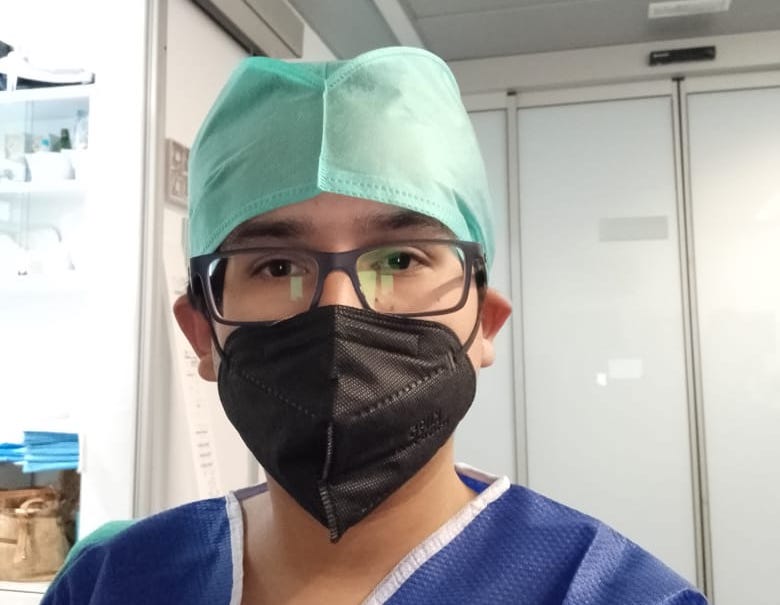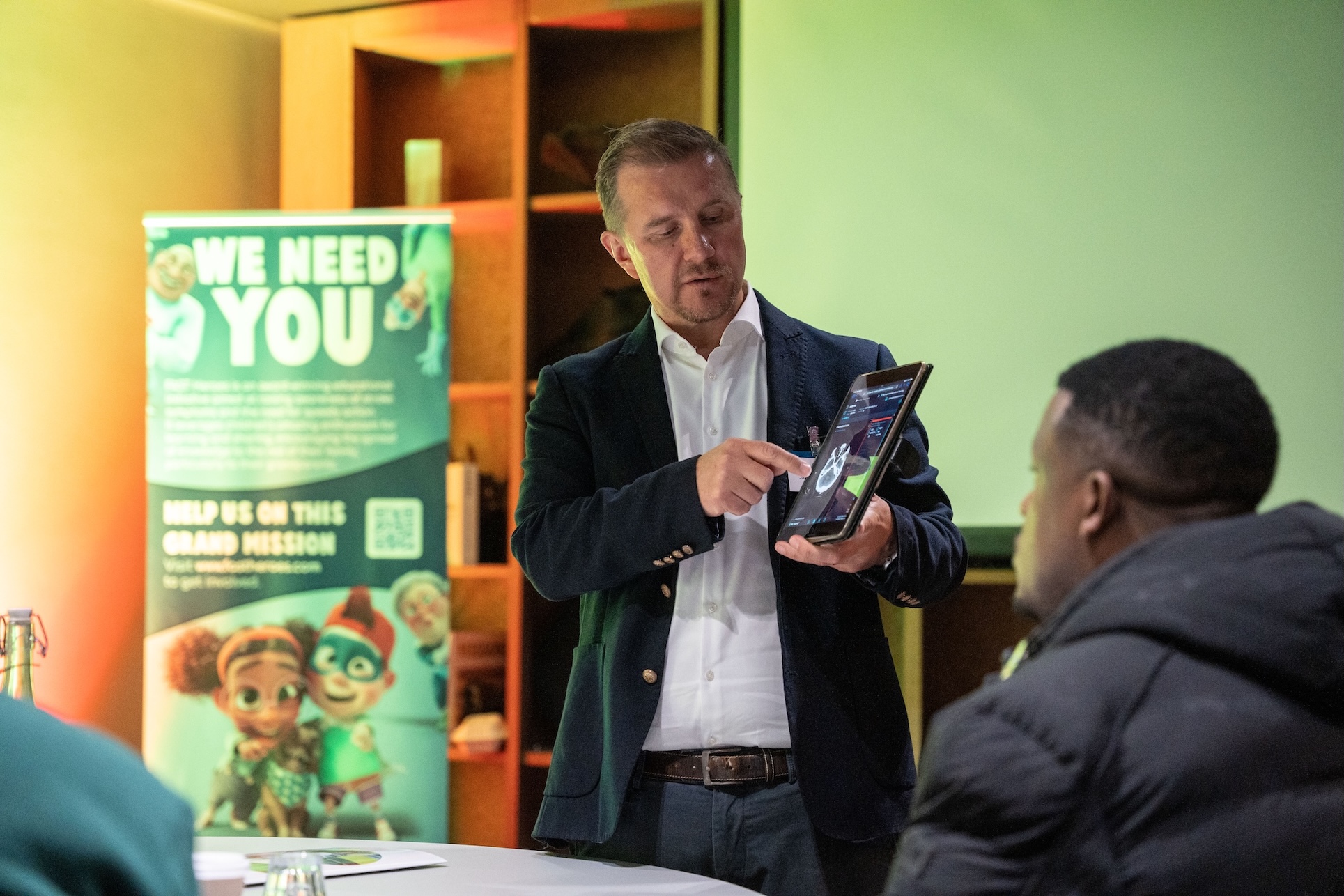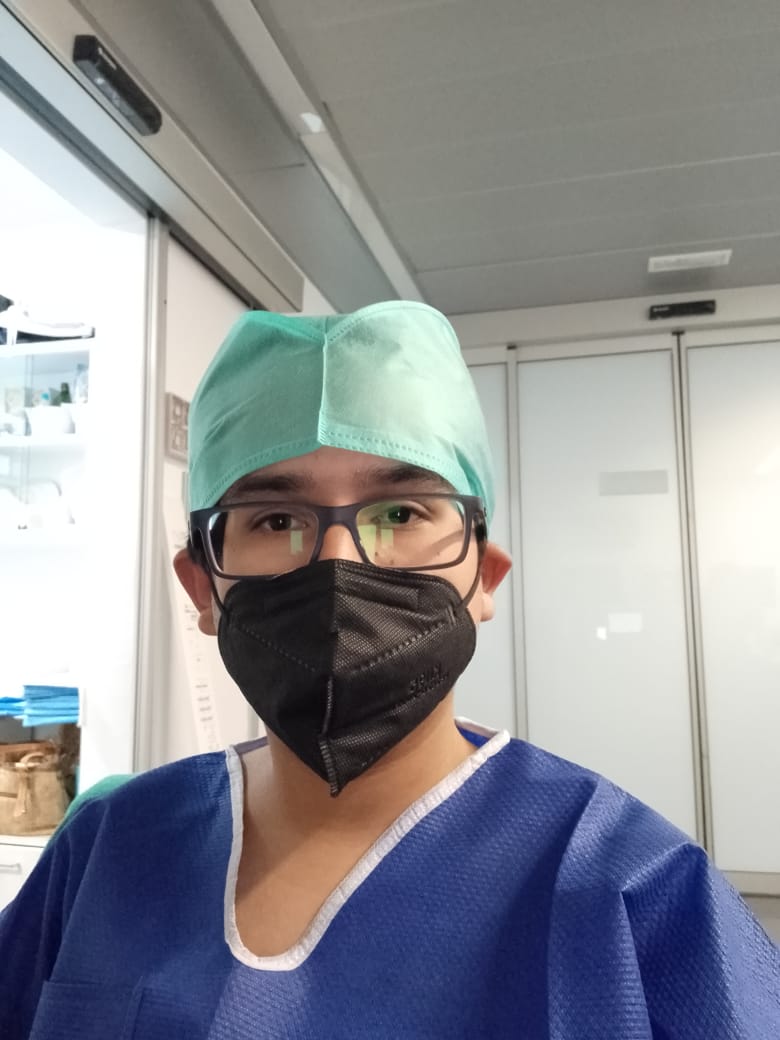
ครั้งแรกที่ดร. Miguel Vences รักษาผู้ป่วยโรคหลอดเลือดสมองด้วยการสลายลิ่มเลือดคือในเดือนที่สองของปีที่สองที่เขาอาศัยอยู่ที่โรงพยาบาล Edgardo Rebagliati Martins ของ Lima
ผู้ป่วยของเขามาถึงสี่ชั่วโมงหลังจากเริ่มมีอาการ และคะแนน NIHSS 25 คะแนนบ่งชี้ถึงโรคหลอดเลือดสมองที่รุนแรง การมีคุณสมบัติที่เหมาะสมของผู้ป่วยสําหรับการสลายลิ่มเลือดถูกกําหนดภายใน 30 นาที เมื่อครบ 4.5 ชั่วโมง พวกเขาจะทดสอบขีดจํากัดด้านนอกของมาตรฐานการดูแลรักษาสําหรับผู้ป่วยโรคหลอดเลือดสมองตีบตันส่วนใหญ่ และมีสิ่งอื่นใดอีก ผู้ป่วยมีอายุ 93 ปี
สําหรับการลงจอดในควอนดารีนี้ ดร. เวนิสต้องโทษตัวเองเท่านั้น
ไม่นานหลังจากเริ่มมีถิ่นที่อยู่ด้านประสาทวิทยาที่โรงพยาบาลรีเบเกลียด เขาเริ่ม “เคาะประตู” เพื่อมองหาการสนับสนุนการรักษาโรคหลอดเลือดสมองเฉียบพลัน ประตูเปิดแล้ว และตอนนี้เด็กอายุ 25 ปีกําลังเรียนรู้ความหมายของวลีที่ว่า “ระวังสิ่งที่คุณต้องการ”
เขาตัดสินใจศึกษายาวิจัยเนื่องจากความท้าทายในระบบการดูแลสุขภาพของเปรู เขาตัดสินใจที่จะเป็นนักประสาทวิทยาเพราะมีการเปลี่ยนแปลงในการดูแลโรคหลอดเลือดสมองและไม่มีใครเป็นคนทํา แต่เมื่อเขาชั่งน้ําหนักการตัดสินใจว่าจะรักษาผู้ป่วยสูงอายุของเขาหรือไม่ เขารู้สึก "กลัวจริงๆ" เขาบอกเราจากมาดริดเมื่อวันอังคารที่ 4 กรกฎาคม 2566
ตอนเย็นในสเปนและเขาเพิ่งเสร็จสิ้นวันแรกในฐานะเพื่อนของลัทธิประสาทบําบัดที่โรงพยาบาลมูลนิธิจิมเนซดีอัซที่มีชื่อเสียงของมาดริด ทําไมต้องเริ่มต้นความเชี่ยวชาญใหม่นี้หลังจากเป็นนักประสาทวิทยาที่ได้รับการรับรองมาเกือบหนึ่งปีแล้ว
คําตอบบอกคุณมากมายเกี่ยวกับโลกตาม ดร. Miguel Vences: เปรูมีนักรังสีวิทยาระบบประสาทที่ได้รับการรับรองเพียง 5 คนเท่านั้นที่ให้บริการแก่ประชากร 33 ล้านคน เมื่อดร. Vences กลับมาที่ลิมาในอีกสองปีนับจากนี้ จะมีเวลาหกวัน
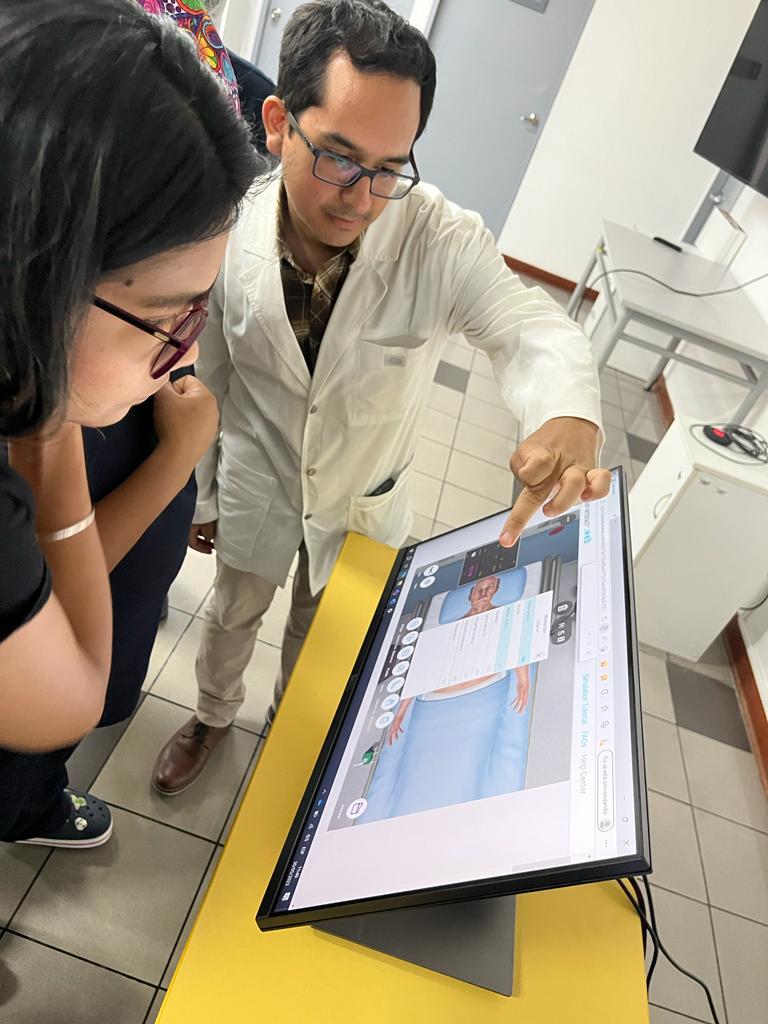
เราไม่จําเป็นต้องรอเพื่อดูว่าคนอื่นทําอะไร
“เป็นการเปลี่ยนแปลงที่คุณต้องการเห็นในโลก” เป็นวลีที่มักมาจาก Mahatma Ghandi ในความเป็นจริงเขาบอกว่าถ้าเราสามารถเปลี่ยนแปลงตัวเองโลกก็จะเปลี่ยนไปเช่นกัน นอกเหนือจากพจนานุกรมแล้ว พจนานุกรมยังเพิ่มสิ่งเดียวกัน - ความจําเป็นที่จะต้องมีช่องว่างระหว่างสิ่งที่เป็นและสิ่งที่ควรจะเป็น สรุปเป็นคําพูดที่ Ghandi พูด: “เราไม่ต้องรอเพื่อดูว่าคนอื่นทําอะไร”
แรงผลักดันเพื่อการเปลี่ยนแปลงของดร. Vences พบอุปกรณ์อีกชิ้นหนึ่งในเดือนเมษายน 2022 เมื่อเขาเข้าร่วมการประชุมโรคหลอดเลือดสมองในโคลอมเบียพร้อมกับตัวแทนจากประเทศในแถบละตินอเมริกาอื่น ๆ เขายังคงเป็นผู้อยู่อาศัยอีกสองเดือนจากการได้รับสายลับของเขา การประชุมทําให้เกิดอารมณ์ใหญ่ เขากล่าว การได้ยินสิ่งที่ประสบความสําเร็จในประเทศต่าง ๆ ที่ไม่แตกต่างจากของเขาเองทําให้เขาโกรธในตอนแรกแล้วจึงตัดสินใจ
นอกจากนี้ เขายังพบและได้รับความสนใจจากศาสตราจารย์ Sheila Martins สถาปนิกด้านการเปลี่ยนแปลงการดูแลผู้ป่วยโรคหลอดเลือดสมองในประเทศบราซิล ซึ่งในอีกหกเดือนต่อมาจะกลายเป็นประธานขององค์กรโรคหลอดเลือดสมองโลก เขากลับไปที่เจตนาของไลมาเกี่ยวกับการจําลองตัวอย่างบราซิลในเปรู
เป้าหมายแรกของเขาคือการได้รับใบรับรอง WSO สําหรับโรงพยาบาล Rebagliati ซึ่งเป็นกระบวนการที่ซับซ้อนและบางครั้งก็ยากลําบากที่จะครอบครองเขาในอีกหลายเดือนข้างหน้า เขาจําได้ว่า “สัปดาห์ที่คลั่งไคล้” ของการฝึกอบรม การฝึกอบรมซ้ํา และการทบทวนกระบวนการและเส้นทางต่าง ๆ เพื่อให้เป็นไปตามมาตรฐานที่เข้มงวดทั่วทั้งห่วงโซ่แห่งการดูแล แต่ถึงกระนั้นความแตกต่างที่น่าสนใจจากการรับรองของ WSO นี่ไม่ใช่เกี่ยวกับการมีบางอย่างแขวนบนผนังดร. Vences กล่าว
การนํากลยุทธ์ที่อิงกับหลักฐานมาใช้ที่โรงพยาบาลรีเบเกลียด ทําให้เกิดผลลัพธ์ตามวัตถุประสงค์ การตัดสินใจดีขึ้นเนื่องจากมีความชัดเจนมากขึ้นเกี่ยวกับเกณฑ์การยอมรับความแตกต่าง การเสียชีวิตลดลง อัตราการรักษาเพิ่มขึ้น
“มันไม่ได้เกี่ยวกับการยกย่องชมเชย แต่เพื่อให้ผู้ป่วยทุกรายมีโอกาสอีกครั้ง” ดร. Vences กล่าว “ฉันรู้ว่าการรับรองจะจัดหาการเดินทางที่ดีกว่าสําหรับผู้ป่วย ทุกประเด็นที่จําเป็นสําหรับการปฏิบัติตามกฎระเบียบจะช่วยปรับปรุงการเดินทางนั้น”
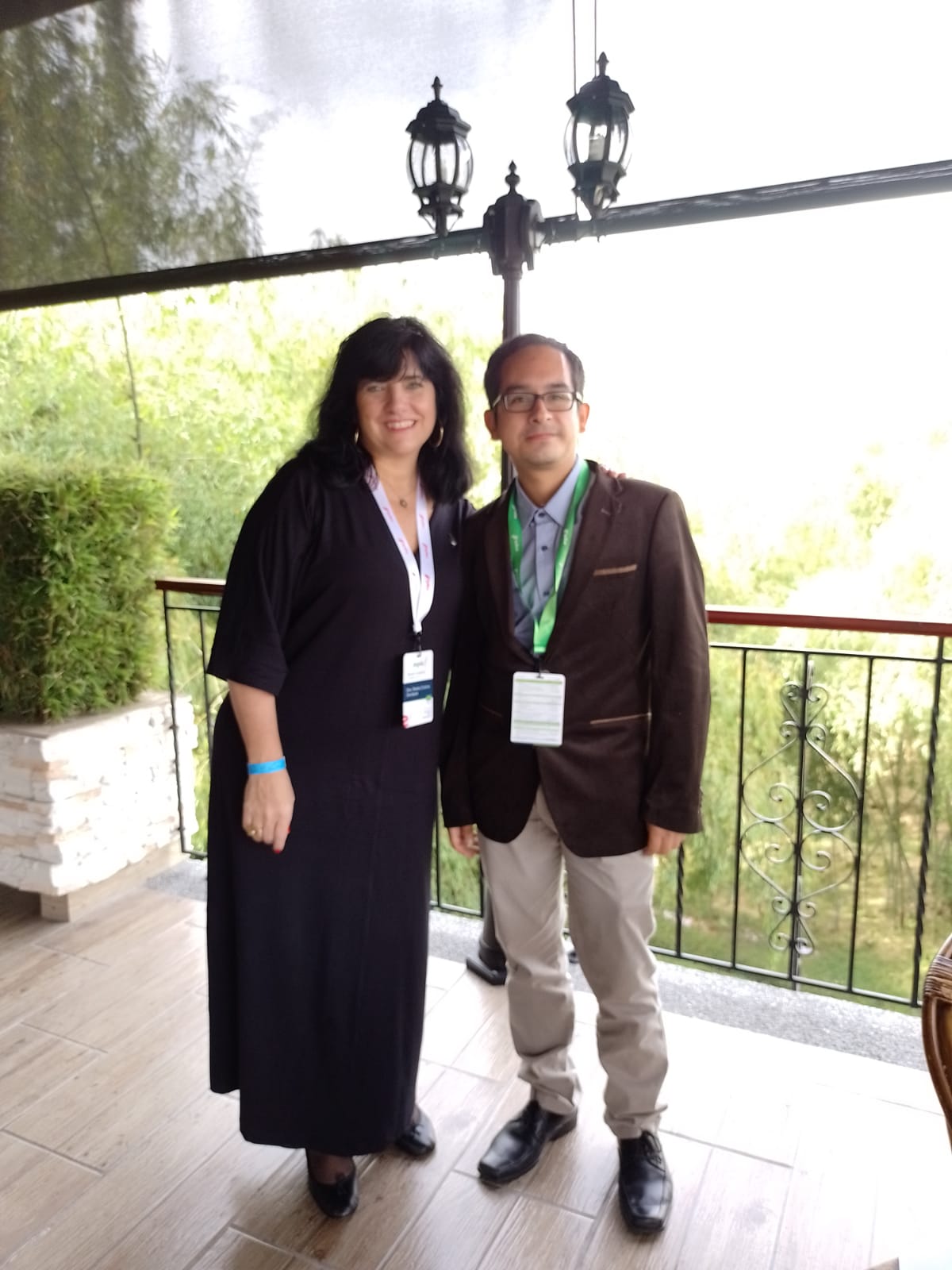
การตัดสินใจที่ยากลําบากอีกอย่างหนึ่ง
มิเกลรู้อยู่แล้วว่าเขาจะไปมาดริดเมื่อเดือนธันวาคม 2022 เขาได้เข้าร่วมงานกับ San Borja Clinic ซึ่งเป็นโรงพยาบาลเอกชนในลิมาที่ต้องการเริ่มรักษาโรคหลอดเลือดสมอง การฝึกอบรมอีกช่วงเวลาหนึ่งที่เข้มข้นซึ่งสนับสนุนโดยการสนับสนุนและทรัพยากรของ Angels และความกระตือรือร้นของหัวหน้าฝ่ายการดูแลวิกฤตของโรงพยาบาล (ดร. José Portugal) ในช่วงปลายเดือนพฤษภาคมเมื่อผู้ป่วยโรคหลอดเลือดสมองเข้ารับการรักษา พวกเขาพร้อมแล้ว
เช่นเดียวกับผู้ป่วยรายแรกของ ดร. Vences ที่ Rebagliati ผู้ป่วยรายแรกที่ San Borja ได้นําเสนอองค์ประชุม แต่ด้วยเหตุผลที่ตรงกันข้ามกัน ผู้ป่วยรายนี้เป็นครูสาวอายุ 35 ปี โดยมีอาการตาบอดและคะแนน NIHSS เท่ากับ 3 ซึ่งบ่งชี้ว่าเป็นโรคหลอดเลือดสมองที่ไม่รุนแรง แต่ในผู้ป่วยรายนี้เป็นภาวะทุพพลภาพ แม้ว่าจะไม่ใช่ข้อห้ามใช้อย่างสมบูรณ์ แต่คะแนน NIHSS น้อยกว่า 5 มักใช้เป็นเกณฑ์การคัดออกที่เกี่ยวข้องสําหรับการสลายลิ่มเลือด
“มันเป็นการตัดสินใจที่ยากลําบาก” ดร. Vences ยอมรับ “คุณเริ่มสงสัยตัวเอง” ในท้ายที่สุด ความเป็นไปได้ที่ผู้ป่วยจะมีปัญหาในการพูดโดยไม่ได้รับการรักษา ทําให้เขาตัดสินใจได้ และเช่นเดียวกับผู้ป่วยอายุ 93 ปี การตัดสินใจที่ยากลําบากนําไปสู่ผลการรักษาประสบความสําเร็จ
หนึ่งเดือนต่อมา Miguel Vences เดินทางมาถึงมาดริด ผู้รับผลประโยชน์ของทุนการศึกษา SILAN-HUFJD ที่มูลนิธิ Jiménez Díaz มอบให้แก่ผู้เชี่ยวชาญทางการแพทย์ที่ต้องการเข้ารับการฝึกอบรมด้านประสาทวิทยาเชิงทดลองต่อไป นักประสาทวิทยา นักรังสีวิทยา และศัลยแพทย์ระบบประสาทเหล่านี้อยู่ที่นั่นด้วยเหตุผลหลายประการ โดยมีเพียงเหตุผลเดียวที่จะเป็นแพทย์ผู้เชี่ยวชาญด้านประสาทคนที่หกของประเทศของเขา
นี่เป็นครั้งแรกของเขาในมาดริด ดร. Vences กล่าว ครั้งแรกของเขาในสเปน นี่เป็นครั้งแรกของเขาในยุโรป ลองคิดดูสิ เขาพลาดการทําอาหารเปรูและครอบครัวของเขาแน่นอน
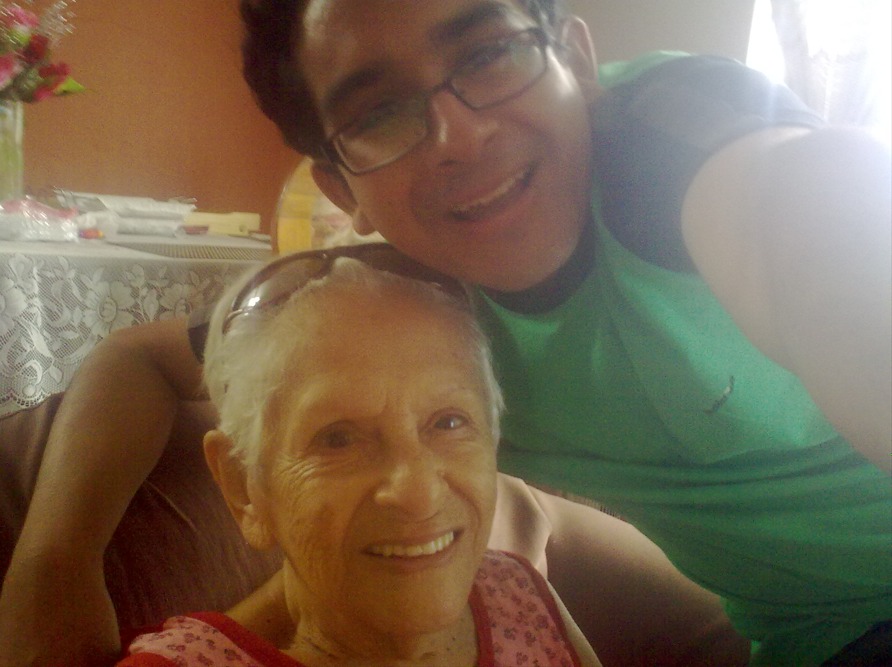
เสียงแห่งประสบการณ์ที่อ่อนเยาว์
ในโซนเวลาอื่น ดร. Vences ยังคงผลักดันการเปลี่ยนแปลงในเปรูอย่างต่อเนื่อง สําหรับ Sol Plamenatz ที่ปรึกษา Angels เขาเป็น "เสียงแห่งประสบการณ์" แม้แต่ตอนอายุ 30 ปี เมื่อพูดถึงการแนะนําให้โรงพยาบาลอื่น ๆ ทําการรับรอง ด้วยปริญญาโทสาขาระบาดวิทยาทางคลินิกและการฝึกงานในโรคหลอดเลือดสมองและประสาทวิทยา เขาได้ตีพิมพ์บทความมากมายในวารสารทางวิทยาศาสตร์ เป็นครูมหาวิทยาลัยและเป็นสมาชิกของสมาคมประสาทวิทยาแห่งเปรู กลุ่มโรคหลอดเลือดสมองเปรู และ ALATAC ซึ่งเป็นกลุ่มแพทย์อายุน้อยที่ประกอบกันเป็นคณะทํางานเฉพาะกิจชาวลาตินอเมริกาสําหรับโรคหลอดเลือดสมองในเด็ก
คุณไม่เพียงต้องการให้แพทย์นําเรื่องการเปลี่ยนแปลงมา เขาอธิบาย “คุณต้องการให้สังคมและพันธมิตรสร้างความเปลี่ยนแปลงในระดับที่แตกต่างกัน เพื่อมีส่วนร่วมกับกระทรวงสาธารณสุขเกี่ยวกับแนวทางระดับชาติและเครือข่ายโรคหลอดเลือดสมองทางไกล เพื่อกระตุ้นให้แพทย์เป็นนักประสาทวิทยาและสนใจโรคหลอดเลือดสมอง”
ในที่สุดก็มีเหตุผลส่วนตัวว่าทําไม Miguel Vences จึงตัดสินใจที่จะยืนหยัดในช่องว่างและเปลี่ยนแปลงในสิ่งที่เขาต้องการเห็น
โรคหลอดเลือดสมองสามครั้งได้เป่าลมให้ครอบครัวของเขา เขารู้ว่ามันไม่ใช่แค่ชีวิตของผู้ป่วยที่เปลี่ยนแปลงไปจากโรคหลอดเลือดสมอง เติบโตไปพร้อมกับคุณย่าและป้าของพ่อ เขาได้รับการสนับสนุนให้ทําตามใจของเขาและเปลี่ยนสิ่งที่เขาไม่ชอบ
ในบรรดาสิ่งที่เขาไม่ชอบก็คือโรคหลอดเลือดสมองและความล้มเหลวในการรักษา และเขาไม่ได้รอดูว่าคนอื่นทําอะไร
